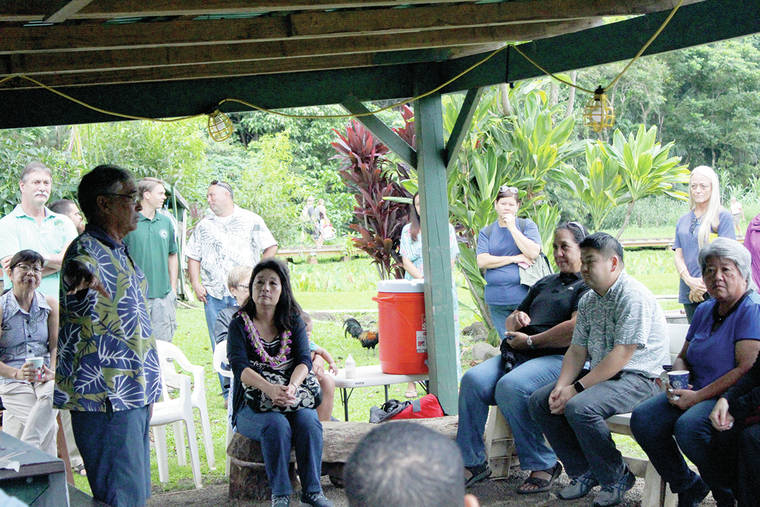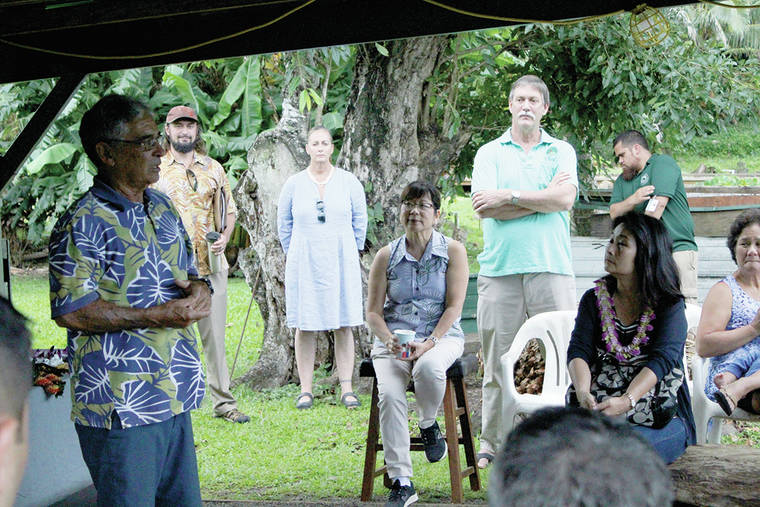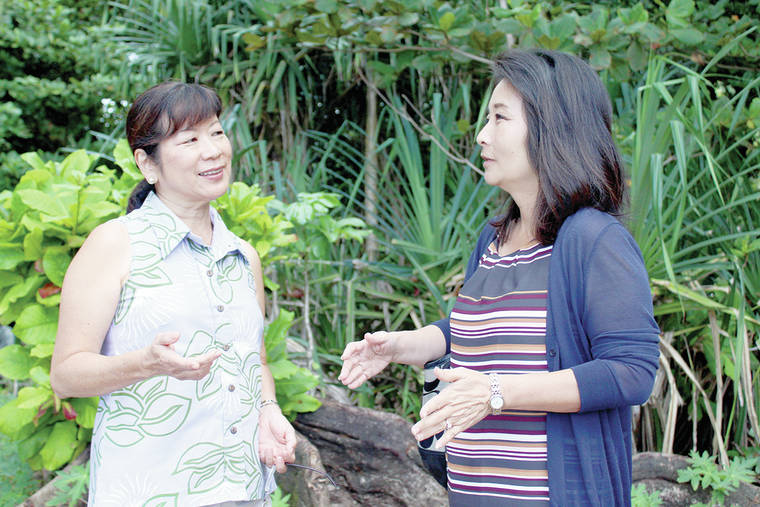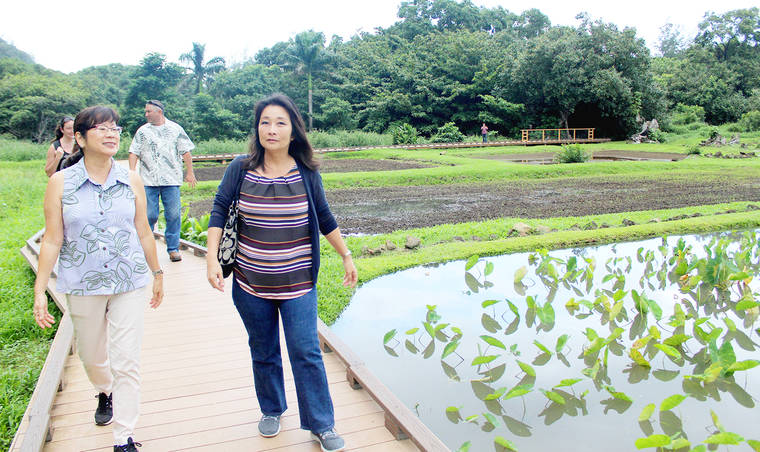HAENA — Haena State Park played host to the Hawaii House of Representatives finance committee Tuesday morning, the first time members have returned since 2017.
They made sure to take in the whole experience, traveling via the new North Shore Shuttle and walking the new boardwalk through the taro lo’i with visitors and hikers gearing up for a Napali Coast adventure.
Committee Chair, Rep. Sylvia Luke, summed it up in one word.
“Speechless,” she said, walking on the new boardwalk to Ke’e Beach. “I’m speechless. In 2017 we were overwhelmed with the number of cars parked and the number of people using the beach.
“It was an unpleasant experience coming here, we stood right here, feeling sad for the community and the culture. Now, it’s peaceful and tranquil.”
A lot has happened at Haena State Park since then — all propelled forward by the April 2018 floods that destroyed North Shore roads, property and the previous parking lot at Haena State Park.
Before that flood, state agencies and departments were working on the Haena State Park Master Plan.
Simultaneously, Rep. Nadine Nakamura was working on implementing more stringent parking fines.
“It gave us new opportunity for a new way of coming together to think of a better vision and better standards and to make Haena an example of how we can balance and create a better experience,” Luke said.
Now, non-Hawaii visitors to Haena State Park have to buy a pass to get into the park and a pass to park their car. The shuttle’s ticket to Ke‘e includes park entry fee.
Hawaii residents can park for free in the new lot with Hawaii identification.
“It makes for a quality experience,” Nakamura said. “We’ve even seen rangers here today, talking with people about hiking and checking passes.”
Local residents are providing positive feedback, too, Nakamura said. Presley Wann, of the Hui Maka‘ainana o Makana, seconded that, saying he’s seeing some Kauai residents he hasn’t seen in the area for years.
“My own family wouldn’t come here and now we see local families that know they can come here and there’s parking,” he said.
The hui has been working for years to integrate cultural education, subsistence-style living and the ancient ahupua‘a system of watershed management in the Ke‘e and Limahuli area.
Many of the new features at Haena State Park work with that vision; the boardwalk through the lo‘i provides a chance to see how taro is grown, and native plants near the parking lot provide examples for teaching.
As they walked through the renovated state park, Luke pointed out this was a rare opportunity to see drastic change in a short amount of time, all moved along “with a little help from Mother Nature.”
“This is why we have field trips,” Nakamura added. “To come to an area and look at the problems and think about the ways we can help.”







Mahalo to Hawaii State Parks who worked creatively with the community for 23 years on a master plan for Haena State Park. A committment to listen and adapt is key to the success of this effort.
Sad. Not ONE Hawaiian anywhere. SAD, SAD!!
I recently visited Haena State Park two weeks ago and was really impressed with the parking lot and the boardwalk to the beach. My only concern, which I am puzzled is I made my reservation online and was charged $5.00. I live on Oahu, originally from Kauai and when I arrived there to show my pass and ID, I was told “no need”! I thought us locals no charge?? Please clarify.
Aloha John, isn’t that Jake Maka in the 2nd picture? The pictures show several native Kauians too.